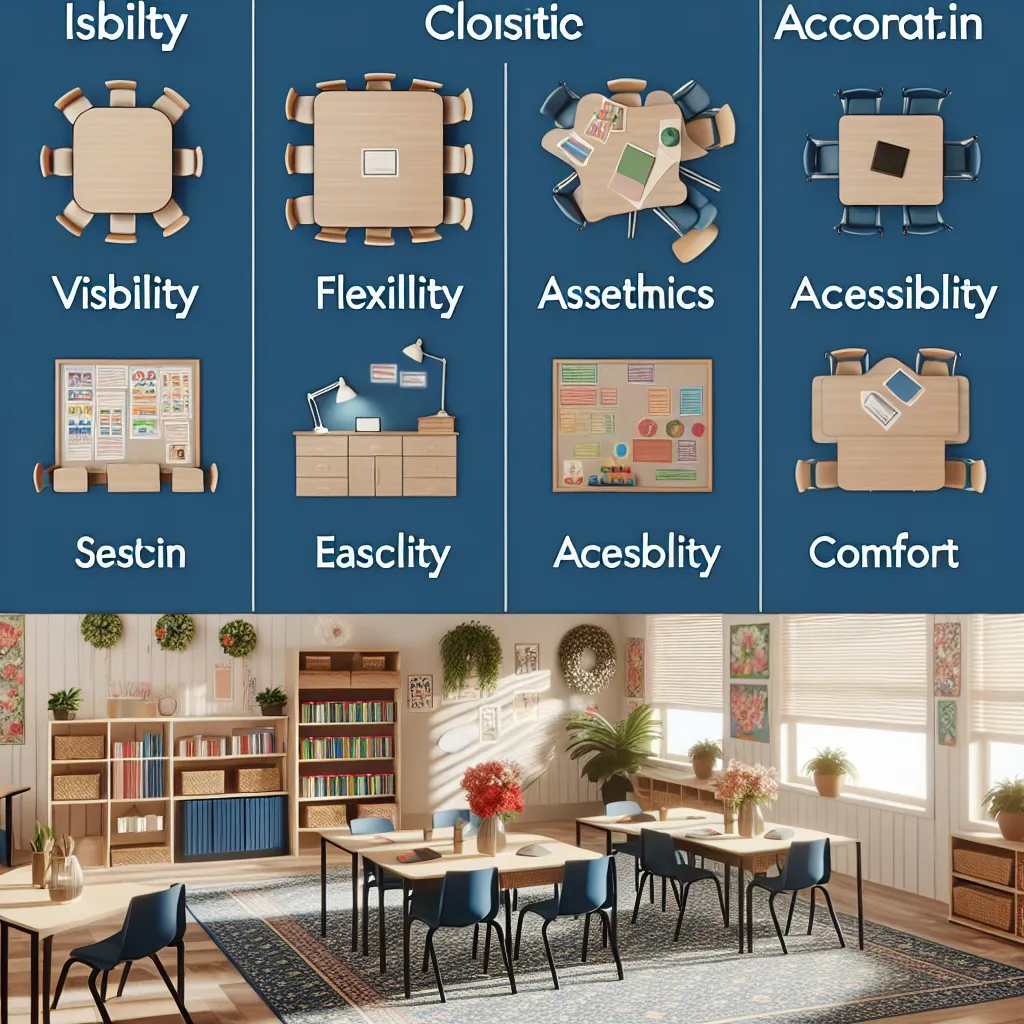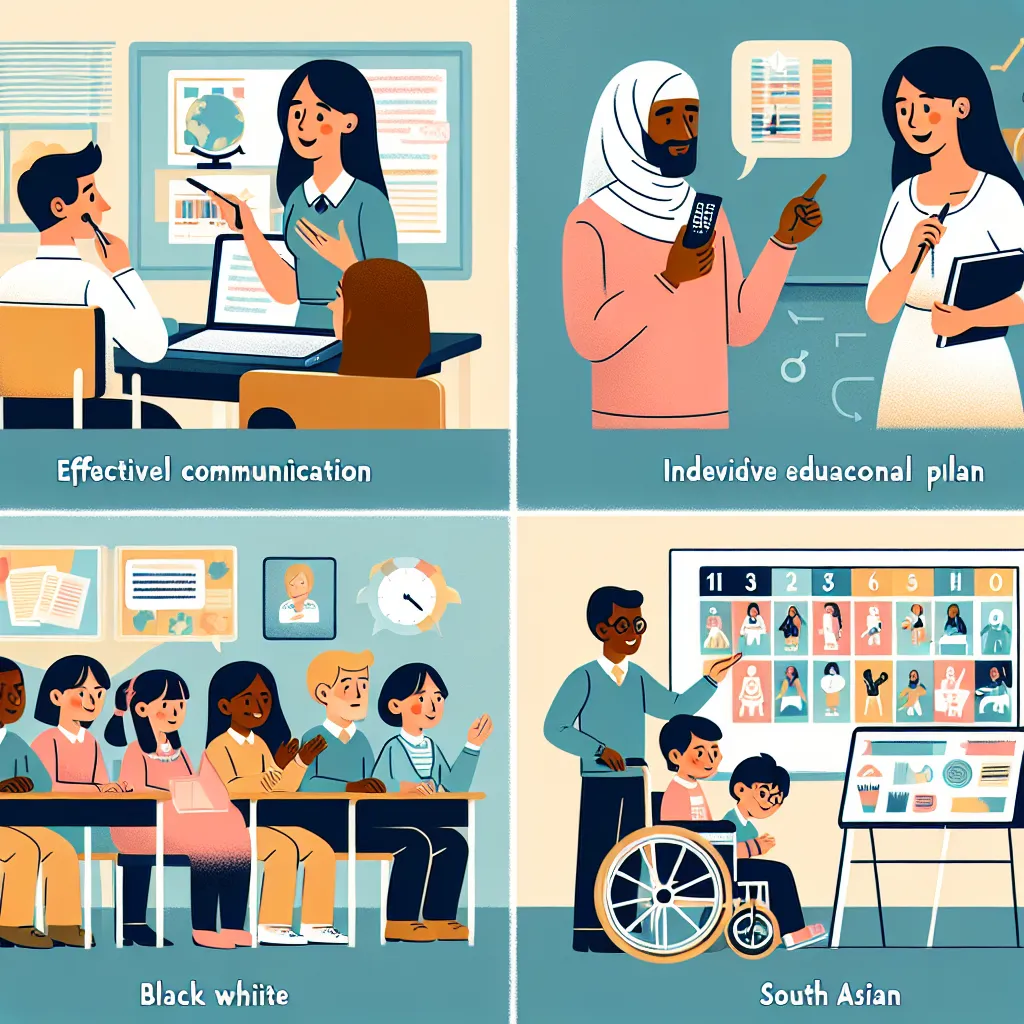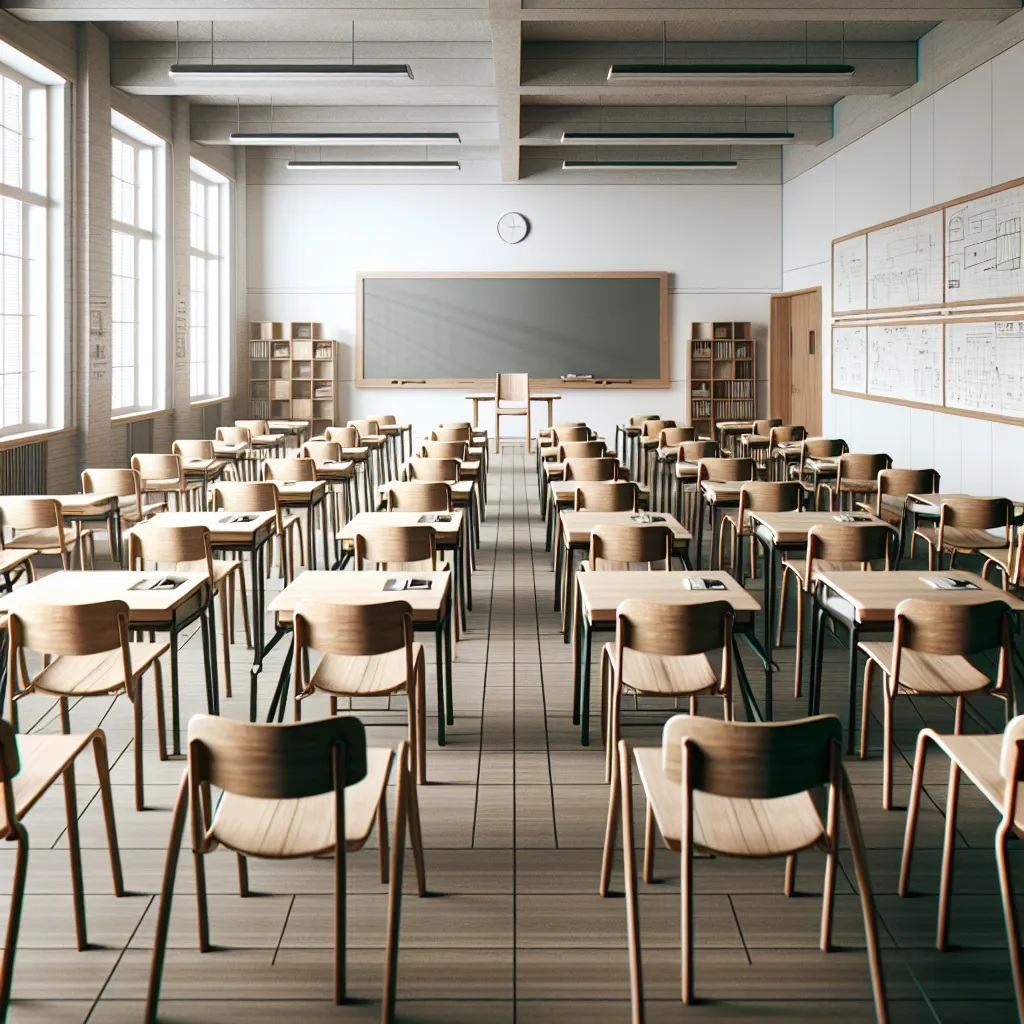Ask AI on The Internet
Question: The way an educator arranges a classroom communicates messages about his or her expectations of how the classroom should be used. Careful use of the physical space could make a considerable difference to classroom (Unisa 2006: 34.) When organising the physical layout of the classroom, the educator must keep the following considerations in mind (Louisell & Descamps 2001: 224.) - Visibility - Flexibility - Aesthetics - Accessibility - Comfort Question 1 1.1. Critically discuss the above mentioned extract by referring to five considerations that the educator must keep in mind when organising the physical layout of the classroom (Use the extract above)
When organizing the physical layout of a classroom, educators must thoughtfully arrange the environment to optimize learning. The extract highlights five key considerations: visibility, flexibility, aesthetics, accessibility, and comfort. Each plays a crucial role in fostering an effective educational environment. Let's discuss each consideration critically: ### 1. Visibility **Visibility** refers to the ease with which students can see the educator, instructional materials, and each other. This is vital for ensuring all students have equal access to visual information and can engage fully in the learning process. **Critical Points:** - **Sightlines:** Desks and seating should be arranged so that every student has an unobstructed view of the board and the instructor. - **Teacher's Role:** The layout should allow the educator to maintain eye contact with all students, facilitating better communication and engagement. - **Challenges:** In large classrooms, ensuring visibility for all students can be difficult, and the arrangement may need to accommodate technology like projectors and screens. ### 2. Flexibility **Flexibility** refers to the ability to rearrange the classroom to suit different teaching styles and activities. **Critical Points:** - **Learning Activities:** Different teaching methods (e.g., group work, discussions, lectures) require different seating arrangements. Flexible furniture can support these varied activities. - **Adaptability:** The classroom should be easily reconfigurable without causing disruption, allowing transitions between activities to be smooth. - **Challenges:** A highly flexible setup might complicate the organization and maintenance of order, especially with larger classes. ### 3. Aesthetics **Aesthetics** involves the visual appeal and atmosphere of the classroom. A well-decorated classroom can enhance student comfort and engagement. **Critical Points:** - **Stimulating Environment:** Bright colors, educational posters, and student artwork can make the classroom a more inviting and stimulating place. - **Distraction Management:** While aesthetically pleasing elements are important, they should not be so overwhelming that they distract from learning. - **Challenges:** Balancing aesthetic elements with functionality can be tough, and personal tastes will vary widely among students and educators. ### 4. Accessibility **Accessibility** is about ensuring that all students, including those with disabilities, can navigate and use the classroom effectively. **Critical Points:** - **Physical Access:** Desks and equipment should be arranged to accommodate wheelchairs and mobility devices, and key areas should be reachable by all students. - **Material Access:** Learning resources should be placed where all students can access them, regardless of physical ability. - **Challenges:** Existing structural limitations may require innovative solutions or additional resources to ensure full accessibility. ### 5. Comfort **Comfort** involves creating a physical environment that supports the well-being and focus of students. **Critical Points:** - **Seating:** Chairs and desks should be ergonomic, providing sufficient support to prevent discomfort during long periods. - **Climate:** Proper ventilation, lighting, and temperature control are essential for maintaining a conducive learning environment. - **Challenges:** Balancing comfort with cost constraints and varying preferences among students can be complex. ### Conclusion In summary, an educator must carefully consider visibility, flexibility, aesthetics, accessibility, and comfort when organizing a classroom. Balancing these elements can create a learning environment that is inclusive, adaptable, and conducive to student success. However, each consideration comes with its own set of challenges that must be addressed thoughtfully to achieve the optimal classroom setup.
Think your answer is better than the AI's? Post it below.
Other Most Relevant Posts:
 # Tutorial Letter: Assignment 05 - Incl. Education Approaches (IEA1501)
# Declaration of Honesty
# Assignment 05 Questions
# Inclusive Pedagogical Approaches
# Teaching Strategies for Incl. E
# Tutorial Letter: Assignment 05 - Incl. Education Approaches (IEA1501)
# Declaration of Honesty
# Assignment 05 Questions
# Inclusive Pedagogical Approaches
# Teaching Strategies for Incl. E
Question Tags
If you want your question answered by an AI, click here.






Post your own comment: